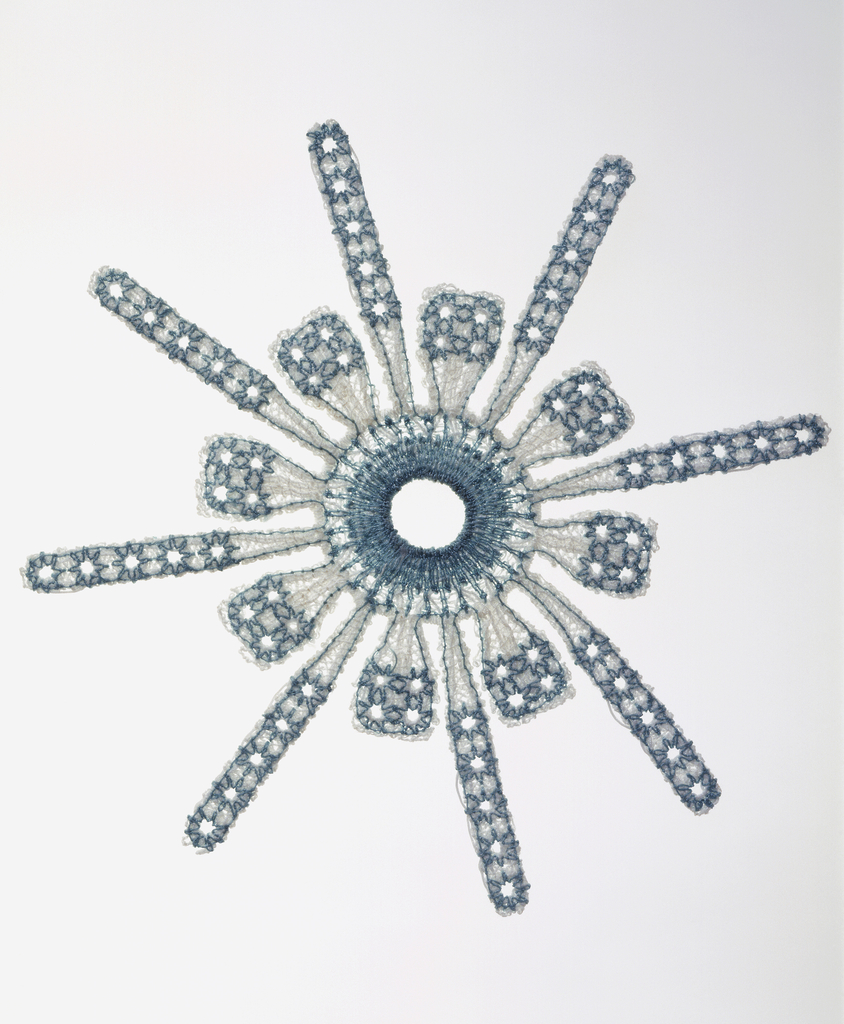Embroidery has an unfairly old-fashioned image, probably because of the pious verses of the 19th century associating needlework with womanly virtue. So when we were developing the exhibition Extreme Textiles: Designing for High Performance, we were especially excited to find this embroidered implant. It may look like a doily, but it is a serious piece of biomedical engineering. Manufactured by Pearsall’s Ltd. in conjunction with Ellis Developments, the device was a collaboration between physicians and embroidery designers, combining textile engineering with the life sciences. The patient had a large tumor in his shoulder, and needed to have his humerus, the large bone which runs from shoulder to elbow, replaced with steel. This device was designed to attach the new bone to the shoulder girdle while still allowing full range of motion.
The technique of machine embroidery on a dissolvable substrate has existed since the 19th century and was originally used to make so-called “chemical lace,” a cheaper imitation of hand-made needle laces. Here, the open, lacey structure promotes tissue in-growth after surgery. A CAD program (commonly used to quickly create new embroidery designs like monograms and sports logos) is used in conjunction with advanced medical imaging technologies to create customized implants. The freedom of the embroidery technique allows the creation of “structurally biocompatible” devices forms which mimic natural fibrous arrays like ligaments, and which have integrated eyelets for the insertion of screws. This device is manufactured in the form of a snowflake, with eight short and eight long projections for attachment to the shoulder, and a center ring to accommodate the knobby end of the humerus.
